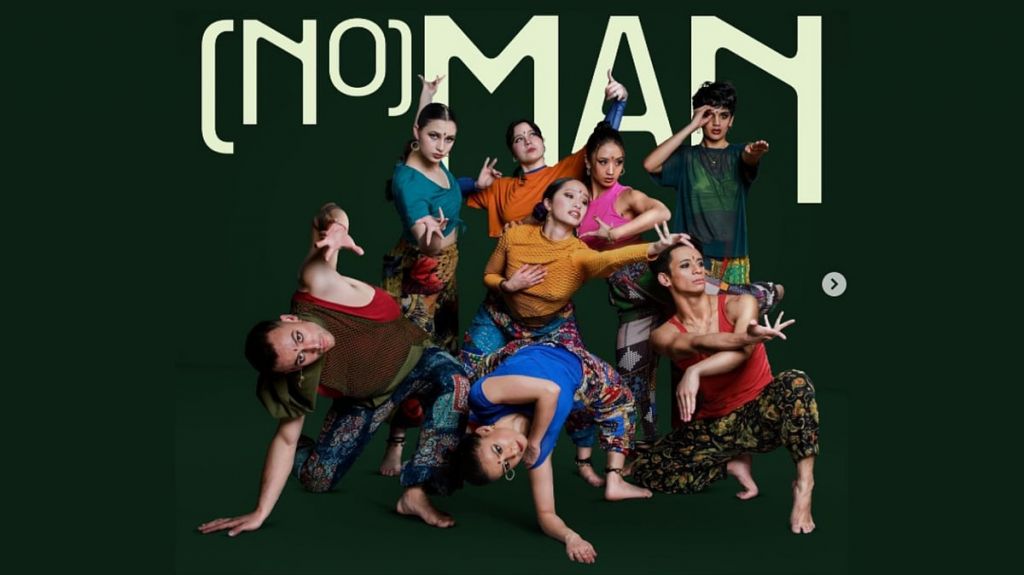
IMGE Dance is set to present “no(man)” on February 14 and 15, 2025, in New York. Supported by the CUNY Dance Initiative, this performance explores existential questions that have intrigued generations. For Ishita Mili, choreographer and founder of IMGE Dance, “no(man)” represents the thesis of her dance journey and philosophical practice.
The show is a cultural patchwork of global languages, sounds, and movement styles, designed to resonate with a diverse audience. “Our goal is to make dance relatable and accessible. Everyone is welcome!” Ishita enthusiastically states.
The Genesis of “no(man)”
The concept of “no(man)” began to take shape in 2021, evolving through a gradual, generative process, like a jigsaw puzzle. Ishita explains, “It entered a new phase when the CUNY Dance Initiative incubated the piece. Since then, our journey has focused on weaving together diverse dance forms, languages, and soundscapes to bring the show to life”.
Composed in eleven languages and featuring global rhythms, “no(man)” is divided into ten chapters. Each chapter creates an imagined world that addresses fundamental human questions about existence, purpose, and belonging. The show explores the delicate balance between inclusion and exclusion, life and death, body and existence, and power and loss.
The chapters also have a unique soundscape, representing cross-cultural musical innovations. For instance, Ishita’s solo performance will feature a composition inspired by her Bharatnatyam arangetram and hip-hop music, exemplifying the company’s unique approach to cultural fusion.
“no(man)” showcases a rich blend of dance and movement vocabularies, music, and languages. It aims to communicate complex life philosophies in an accessible manner, a mission that lies at the heart of IMGE Dance Company’s ethos.
IMGE Dance: A Diasporic Voice for Artistic Storytelling
As an American dance company, IMGE presents a kaleidoscope of global diasporic experiences that collectively define the American identity. Its works interweave dance forms ranging from Indian classical to American street style, reflecting on the diverse experiences of the dancers associated with IMGE.
Ishita posits that “anything American is inherently diasporic” and that the dance forms IMGE works with “embody the movement vocabulary of Black-American and Latin communities through the dynamic expressions of hip-hop and street styles, as well as the nuances of Bharatnatyam and Mayurbhanj Chhau.”
She further adds that the “idea is to create an accessible and universal approach to movement-based storytelling. My favorite audience experience is when non-dancers share that they understood something from our performances because of the diverse dance vocabulary.”
Ishita Mili: The Voice behind IMGE
IMGE’s work is profoundly influenced by Ishita’s personal explorations and her quest to understand human interactions across regions, cultures, and practices. As an artist, she carries with her multiple identities.
Hailing from West Bengal, Ishita learned Mayurbhanj Chhau at a young age, training under her uncle, a renowned Chhau dancer, and performing since she was eight. When she moved to the U.S. in the 1990s, opportunities to pursue Chhau were scarce, leading her to train in Bharatanatyam instead. Years later, she secured an apprentice grant from the state of New Jersey to study Chhau under the globally acclaimed guru Rakesh Sai Babu from New Delhi.
“The pandemic’s digital education made this possible because, even today, Chhau remains inaccessible in the U.S. It’s unfortunate, as the dance form has immense foundational potential,” Ishita remarks. “I’m creating access in my own way.”
For her, rediscovering Chhau was like reconnecting with a lost language embedded in her DNA—intuitive and deeply familiar. Ishita blends elements of Bharatanatyam and Chhau in her productions at IMGE. “I’m deeply inspired by mudras (artistic hand gestures) and nuanced abhinaya—the isolated way of expression through the eyes—in Bharatanatyam. This is the core of my work,” she explains.
Chhau, with its animalistic movements rooted in walking and hunting, expands her vocabulary of everyday actions. Its turns, jumps, and athleticism evoke similarities with contemporary dance, while its folk essence mirrors street-style grooves. “These intersections shape IMGE’s movement language, where the lines between art forms blur,” she adds.
Art as a Catalyst for Change
Ishita firmly believes in the transformative power of performing arts to foster empathy. “In today’s world, where new divisions are constantly emerging, empathy is sorely lacking. Performing arts possess the unique ability to bridge gaps between diverse audiences,” she asserts with conviction. We have performed for children and we learned that kids understand better than adults sometimes. After all, our work is about the everyday view of the world. The adults need to be more empathetic”
Through IMGE, Ishita aims not only to create compelling performances but also to provide platforms for emerging artists and address resource disparities in the arts community. “IMGE is truly a cultural change-maker, transcending the traditional role of a dance company,” she emphasizes. We have
As “no(man)” prepares for its highly anticipated debut, Ishita hopes that the performance lives long, resonating deeply with audiences worldwide and prompting them to contemplate a profound question: How can we exist in all our multiplicities in a reimagined world?
(The article is published under a mutual content partnership arrangement between The Free Press Journal and India Currents).